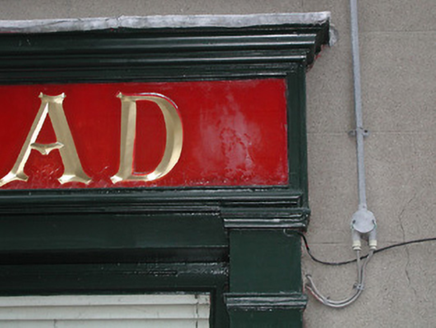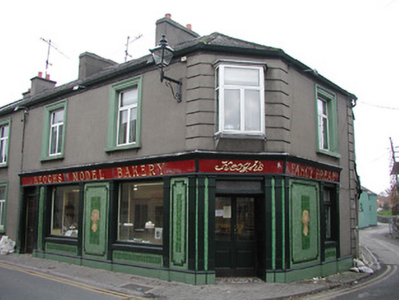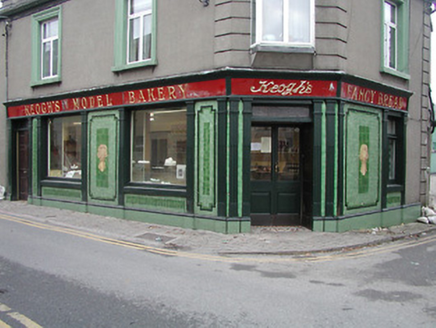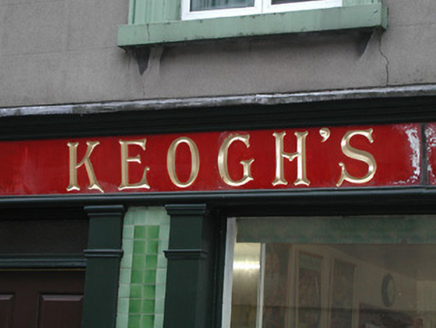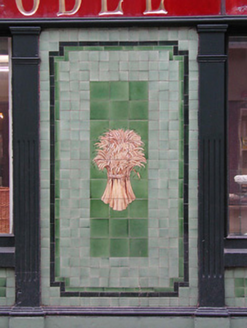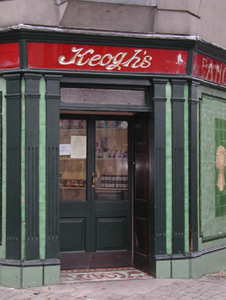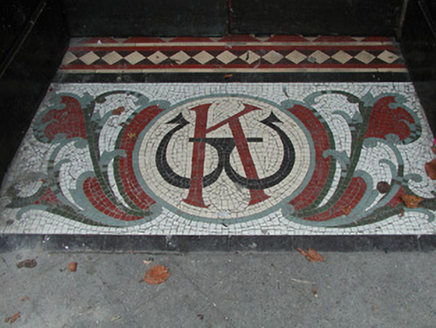Survey Data
Reg No
12314047
Rating
Regional
Categories of Special Interest
Architectural, Artistic
Original Use
House
In Use As
House
Date
1890 - 1910
Coordinates
241472, 143992
Date Recorded
15/06/2004
Date Updated
--/--/--
Description
End-of-terrace five-bay two-storey building, c.1900, on a corner site possibly incorporating fabric of earlier house, c.1800, with three-bay two-storey elevation to west, single-bay single-storey canted entrance bay to south-west having box oriel window to first floor, single-bay two-storey return elevation to south, and wrap-around shopfront to ground floor. Refenestrated. Pitched and hipped slate roof with clay ridge tiles, rendered chimney stacks, and cast-iron rainwater goods on rendered eaves. Unpainted rendered, ruled and lined walls with rendered quoined piers to ends and to corners. Square-headed window openings (including to box oriel window on rendered jetty) with concrete sills, moulded rendered surrounds, and replacement uPVC casement windows. Wrap-around shopfront to ground floor with three-quarter fluted pilasters, decorative glazed clay tile intermediary panels, fixed-pane timber display windows, glazed timber panelled double doors on mosaic-tiled threshold having overlight, timber panelled door to house having overlight, glazed fascia over having inscribed brass lettering, and lined coping. Interior with decorative carved timber display shelving to ground floor, and timber panelled reveals/shutters to window openings to first floor. Road fronted on a corner site with concrete brick cobbled footpath to front.
Appraisal
An elegantly-composed middle-size model bakery building positioned on what historically was an advantageous site close to a flour mill (later a corn mill) where ingredients for baking might easily be obtained. A very fine shopfront manufactured and imported by the Brilliant Sign Company of England enhances the visibility and street presence of the site in Lower Bridge Street: pretty glazed and mosaic tile work identifies the artistic design distinction of the composition while an early-surviving commercial interior displays profiled joinery exhibiting high quality craftsmanship. Although the survival of the original composition attributes maintains much of the integrity of the composition the external expression of building has been compromised by the insertion of inappropriate replacement fittings to some of the openings.
